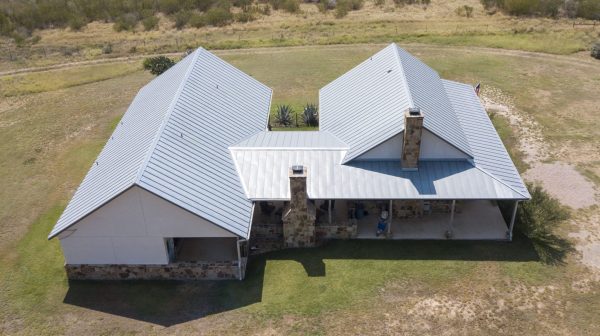
Metal roofs are renowned for their durability and longevity, but they are not impervious to damage. Over time, factors such as weather conditions, corrosion, and physical impact can lead to the development of holes. These holes, if left unattended, can lead to serious issues like leaks and structural damage. Fortunately, repairing a hole in a metal roof is a task that can often be handled effectively as a DIY project. With the right tools, materials, and approach, you can ensure your roof remains in top condition, protecting your property from the elements.
Understanding the Causes of Holes in Metal Roofs
Identifying Common Causes
Holes in metal roofs can arise from a variety of sources. Natural wear and tear over time, especially in harsh weather conditions, can gradually degrade the roof. Hail storms are particularly notorious for creating punctures in metal roofing. Rust and corrosion are other common culprits, often occurring in areas with high humidity or salt exposure. Additionally, accidental punctures can happen during maintenance activities, such as installing satellite dishes or walking carelessly on the roof. Regular inspections are crucial to catch these issues early, preventing small problems from turning into major ones.
Assessing the Damage
Before attempting any type of roofing repair, it’s important to assess the extent of the damage. This involves a careful inspection of the roof. Safety is paramount; use a sturdy ladder and consider safety gear like harnesses or non-slip shoes. Look for not only the obvious holes but also any signs of rust, corrosion, or weakened areas that might indicate future problems. The size and number of holes will determine the complexity of the repair job. Small holes may require simple patching, while larger or multiple holes might necessitate more extensive work.
Preparing for the Repair
Safety First
Before beginning any repair work, prioritize safety. Ensure you have a stable, secure ladder for accessing the roof. Wear appropriate safety gear, including gloves, non-slip shoes, and safety glasses. If the roof is steep or high, consider using a safety harness or rope for added security. Always have someone nearby in case of an emergency.
Gathering Necessary Tools and Materials
To repair a hole in a metal roof, you will need specific tools and materials. Gather roofing cement or a suitable sealant, a metal patch (galvanized steel or aluminum), a wire brush, a utility knife, a measuring tape, and heavy-duty scissors or tin snips. Also, have a clean cloth and a solvent like mineral spirits for cleaning the area.
Step-by-Step Guide to Repairing the Hole
1. Cleaning the Damaged Area
Start by cleaning the area around the hole. Use the wire brush to remove any rust and debris. Clean the surface with a cloth and solvent to ensure it’s free of dust, oil, and other contaminants. The area must be dry before proceeding with the repair.
2. Applying the Patch
Cut the metal patch to a size that extends at least 2 inches beyond the edges of the hole in all directions. If the roof is corrugated, shape the patch to match the contour of the roof. Apply a generous amount of roofing cement on the underside of the patch. Carefully place the patch over the hole, pressing firmly to ensure a good bond. Smooth out any air bubbles or wrinkles.
3. Sealing and Finishing
Once the patch is in place, apply a bead of sealant around its edges. This creates a waterproof barrier and helps integrate the patch with the existing roof material. Check for any gaps or weak spots and apply additional sealant as needed. Allow the repair to dry according to the sealant manufacturer’s instructions.
Post-Repair Considerations
After the repair is complete and the sealant has dried, it’s important to check for leaks. You can do this by gently spraying water on the repaired area and observing from the inside for any water penetration. Pay attention during the next rainfall to ensure the repair holds up.
Regular maintenance is key to extending the life of your metal roof and preventing future holes. Schedule periodic inspections, especially after severe weather events. Keep the roof clean of debris and address any signs of rust or corrosion immediately.
Conclusion
Repairing a hole in a metal roof is a manageable task if approached with the right tools, materials, and techniques. By following these steps, you can effectively fix holes and maintain the integrity of your roof. Remember, regular inspections and maintenance are your best defense against roof damage. For larger or more complex repairs, don’t hesitate to seek professional assistance.
